How to identify wildflowers – recognise British flora from their petals, leaves and stems
Our simple guide to how to identify wildflowers will help you to recognise Britain's most beautiful natural jewels
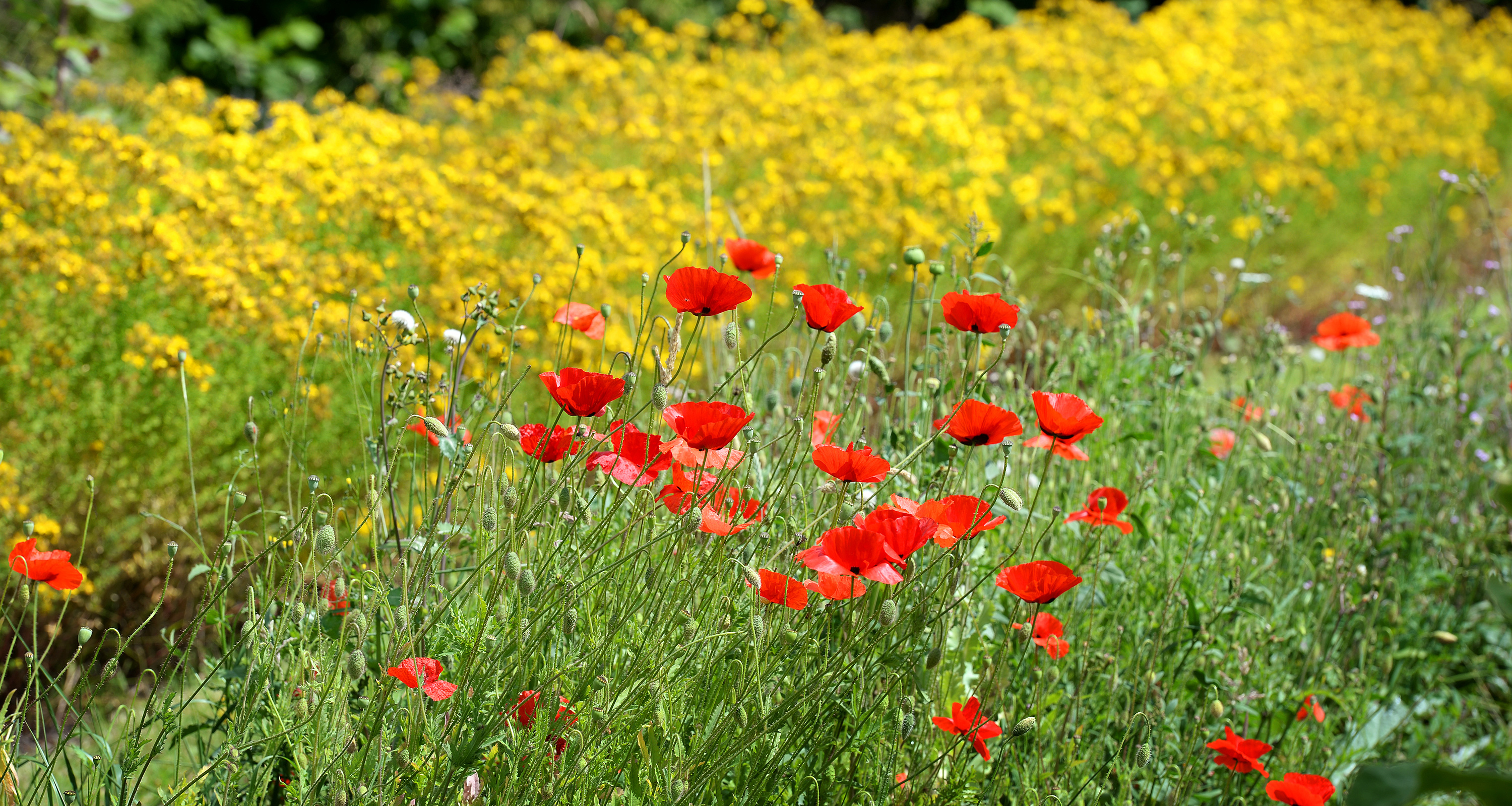

Growing randomly in their natural settings as well as made-made environments, British wildflowers add sprinklings of bountiful colour and joy wherever they bloom.
Wildflowers are carefree, simple and abundant providing an ever-changing panorama of colours, shapes, sizes and textures. It is precisely the informal spontaneity of wild flowers – the random mingling of colours and species, and the way that they change through the seasons – that delights us.
Learning how to identify wildflowers is essentially a question of simple observation combined with knowledge of plant structure.
- Also read How to identify British trees
How to identify wildflowers
1. Start with the flowers themselves
There are many flower types, differing in size, shape and colour, and flowers are possibly the most important part of a plant for identification. However, most flowers have the same basic parts.
The arrangement of the female part (the pistil) and the male part (the stamen) is important in determining which family and genus the plant belongs to.
Petals are also important in identification. Many plants have brightly coloured petals to attract pollinators, such as bees and butterflies.
Design expertise in your inbox – from inspiring decorating ideas and beautiful celebrity homes to practical gardening advice and shopping round-ups.
Behind the petals are smaller, green, leaf-like parts called sepals. These protect the flower when it is in the bud. In some species the petals are very small and insignificant, and the flowers are accentuated by showy, coloured modified leaves called bracts.
2. Look at the leaves
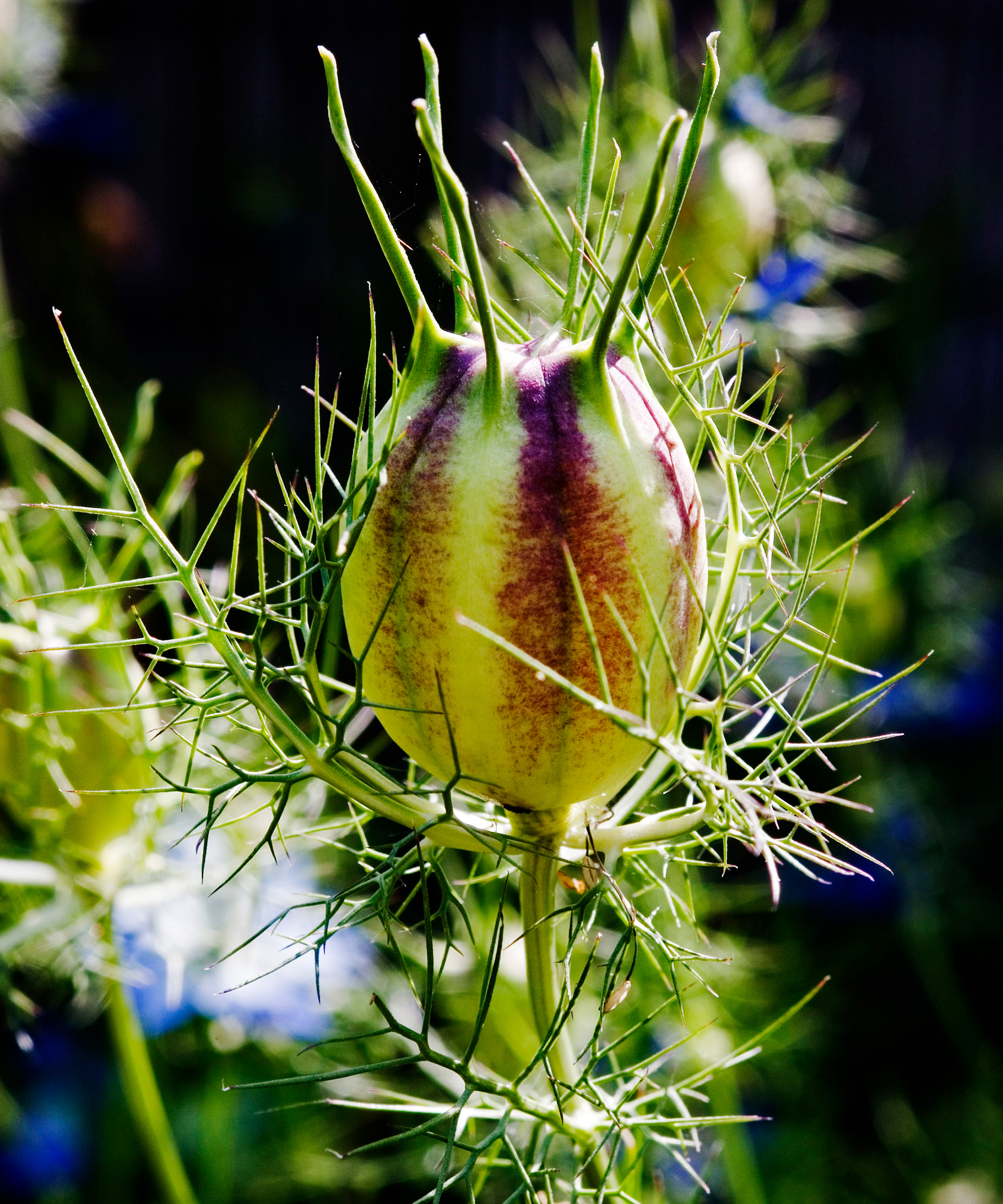
Almost as variable as flowers, leaves come in many different shapes and sizes. They are the plant’s food factories, where carbon dioxide and water are converted through the process called photosynthesis into sugar.
This energy-rich sugar is the food used by most plants, and is also the basic foodstuff that helps support all other forms of life. As well as supplying food for the plant, photosynthesis provides the oxygen that we all breathe.
3. Study the stems
Plant stems carry the water and nutrients taken up by the roots to the leaves; the food produced by the leaves then moves along the stems to other parts of the plant.
Stems also provide support, allowing the leaves to reach the sunlight they need to produce food. Stems may be very distinctively shaped and are frequently helpful in identifying plants.
20 common wildflowers in Britain
1. Meadow Buttercup
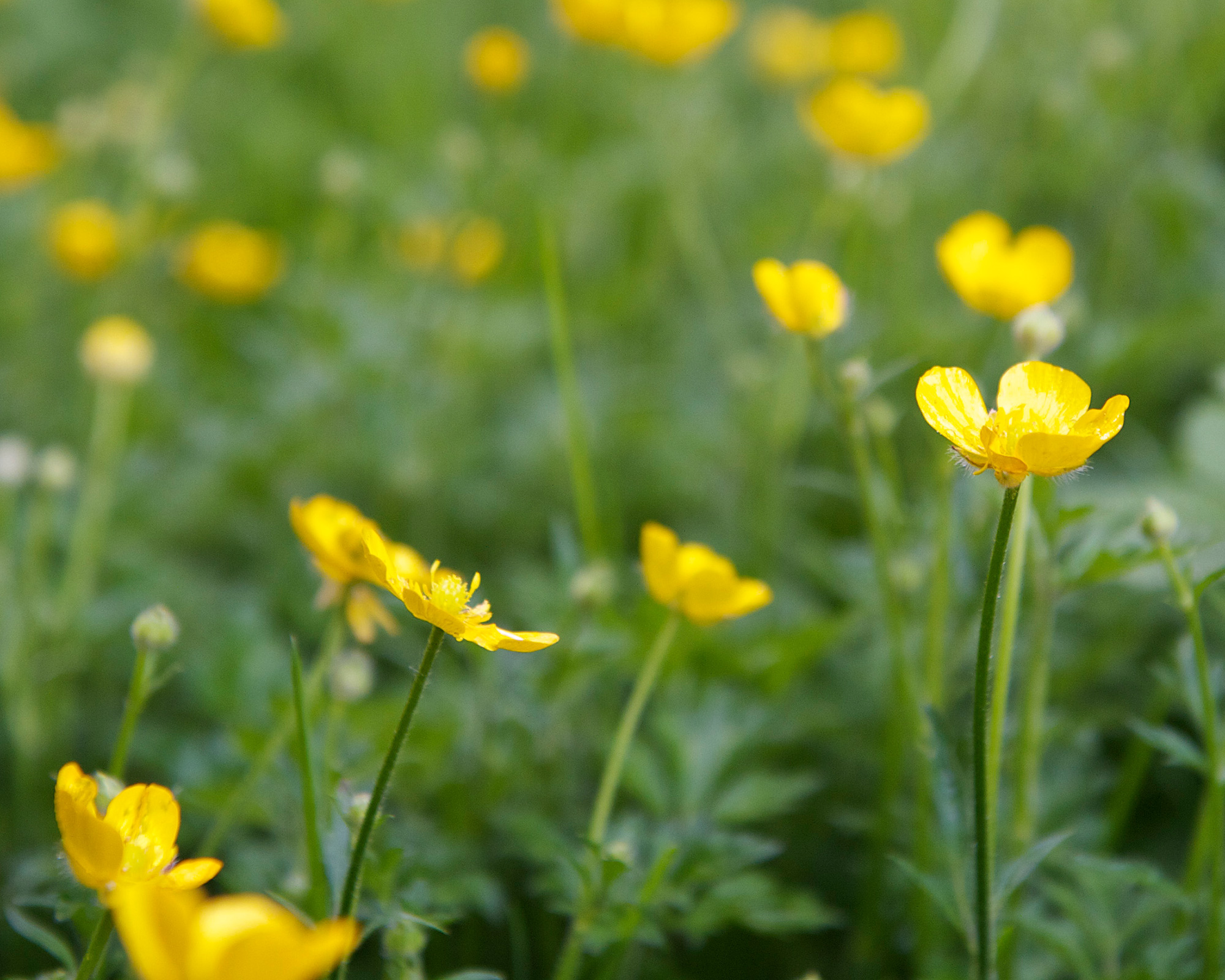
Meadow buttercup Ranunculus acris is a tall erect herb with smooth or slightly hairy flower stalks that are held high above the foliage.
The lower leaves are strongly divided into three to seven lobes. They are toothed, hairy and occasionally marked with black, with none of the lobes stalked.
The showy yellow flowers are to 20mm across, with five rounded, glossy petals, which are produced in great profusion from late spring to early autumn.
2. Lenten Rose
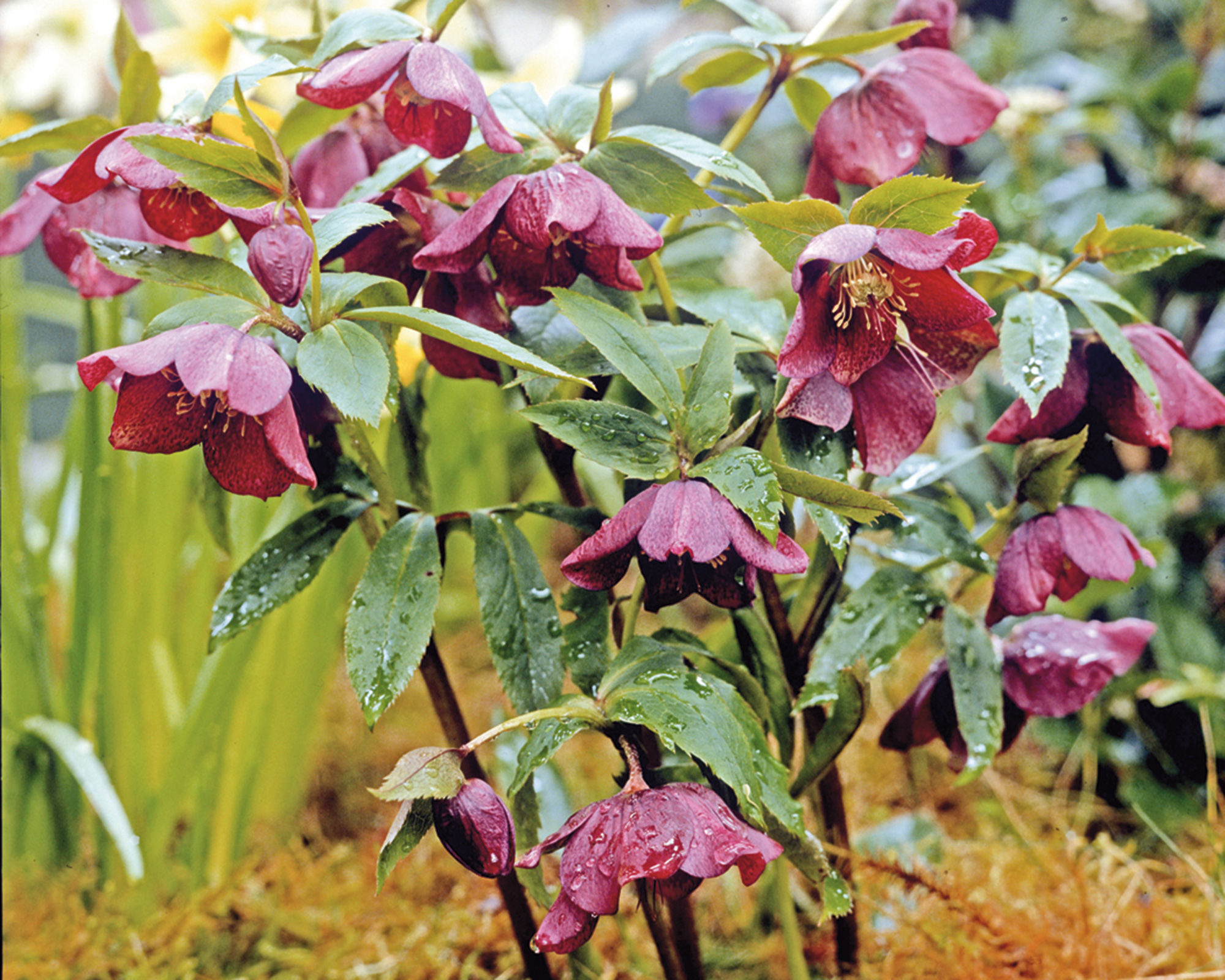
Lenten rose Hellebore, Helleborus orientalis has smooth or slightly hairy stems with large, leathery, evergreen leaves which are mainly basal, divided into seven or nine lance-shaped segments with highly serrated edges and purple stalks.
The branched flower stalks bear one to four nodding or outward-facing, saucer-shaped, unscented flowers, each 60–70mm across. T
he overlapping petals are cream tinged green flushed with purple, gradually changing to green following fertilization. The nodding, saucer-shaped blooms appear from late winter onward, before the new foliage.
Photography / Alamy
3. Delphinium Larkspur

Delphinium Larkspur (Delphinium elatum) has large rounded leaves which are fairly deeply divided into five to seven or more coarsely toothed lobes.
Each flower is 25– 40mm long and up to 25mm, with golden filaments in the centre and five petal-like sepals, the rear one elongated into a long, slender, curving spur; the two upper petals are united.
Photography / Alamy
4. Love-in-a-mist
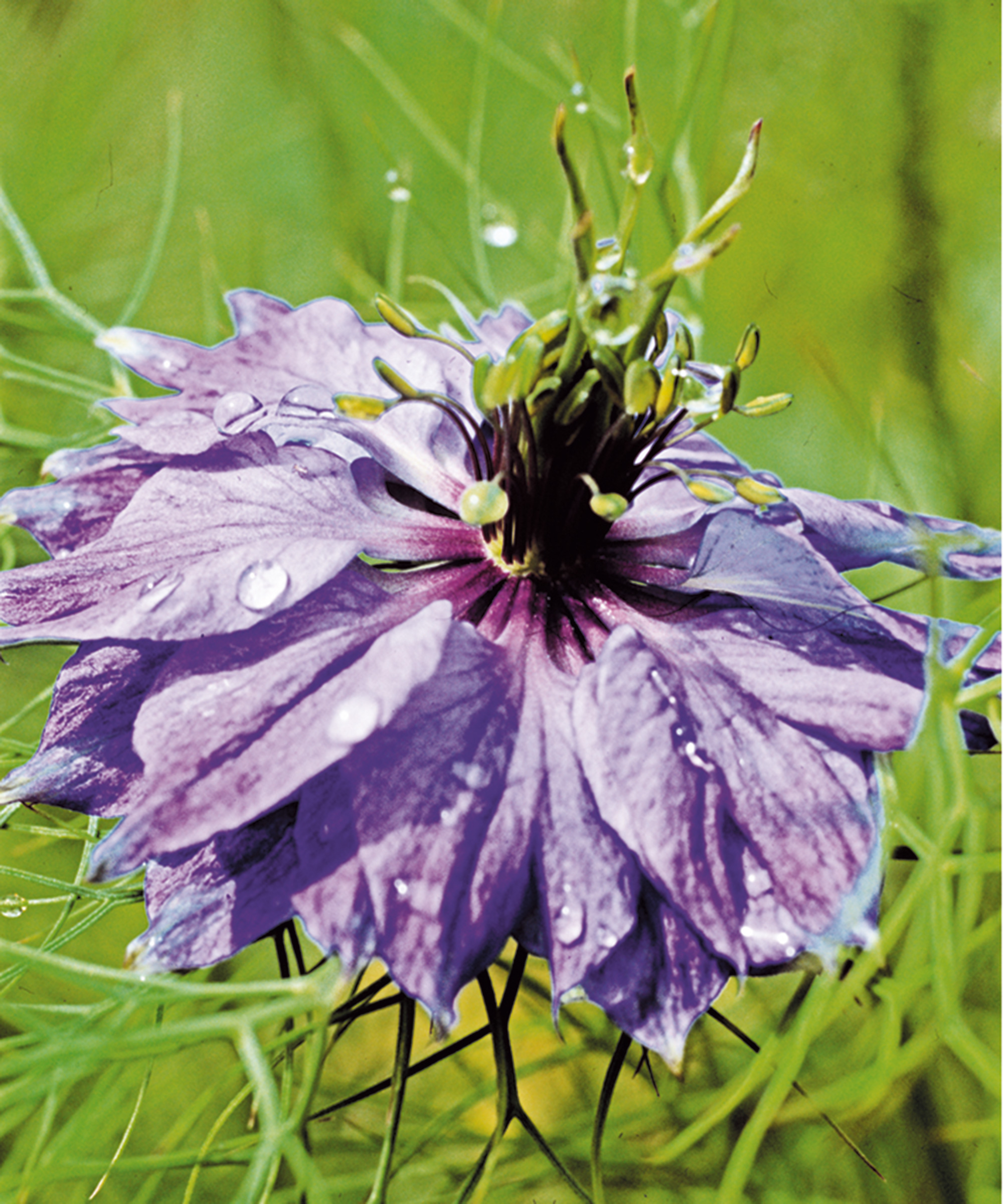
Love-in-a-mist Nigella damascena has short-stalked pale blue flowers which are 20–30mm across with a ring of small, finely divided leaves beneath. There are normally five perianth segments and numerous blue stamens.
Photography / Future PLC
5. Wood Anemone
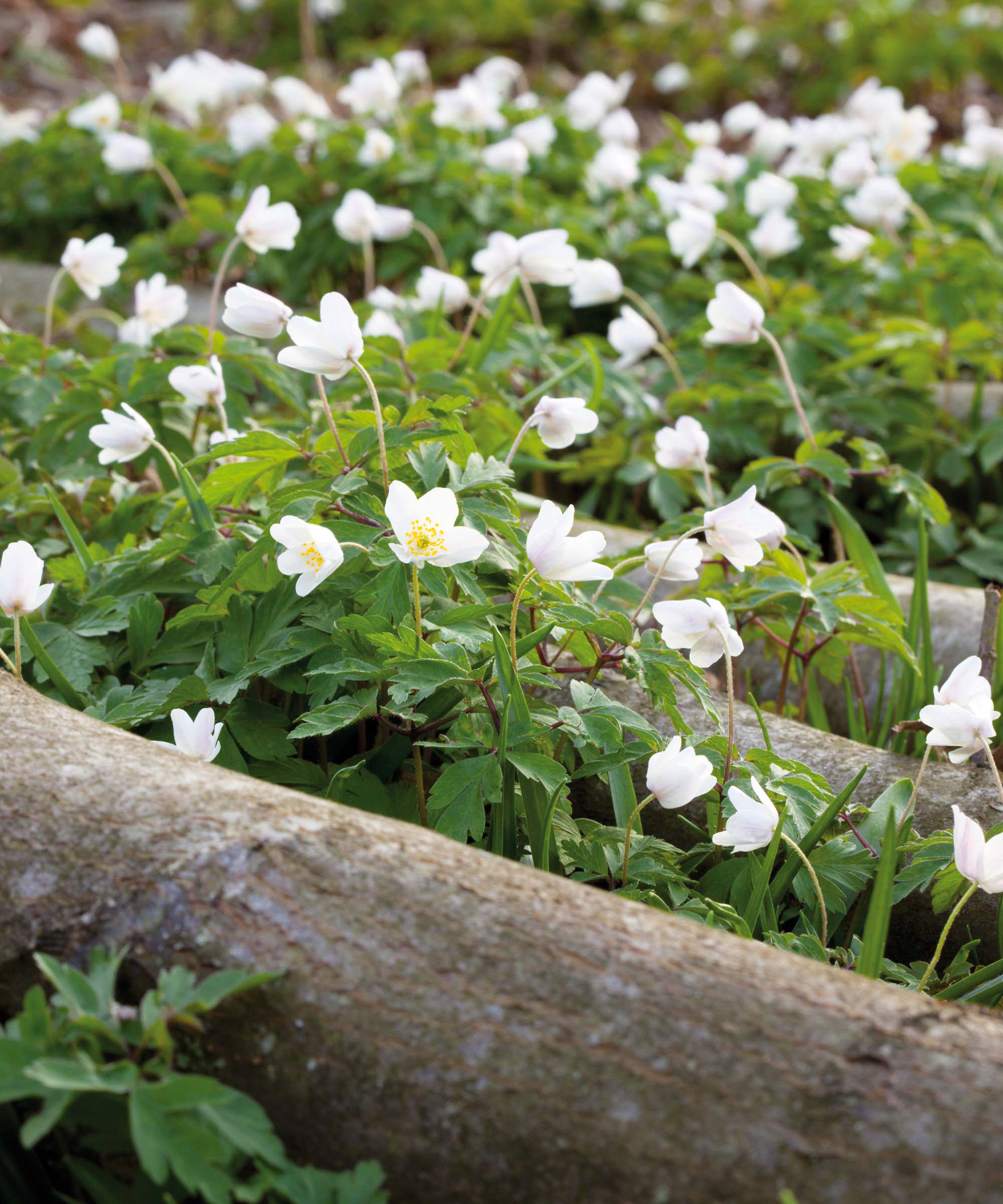
Wood anemone (Anemone nemorosa) is hairless and has upright flowering stems with a whorl of three leaves two-thirds up the stem. The large basal leaves appear after the flowers. The leaves are palmate, with toothed lobes.
Photography / Jonathan Buckley, Wood anemone available from Sarah Raven
6. Alpine Clematis
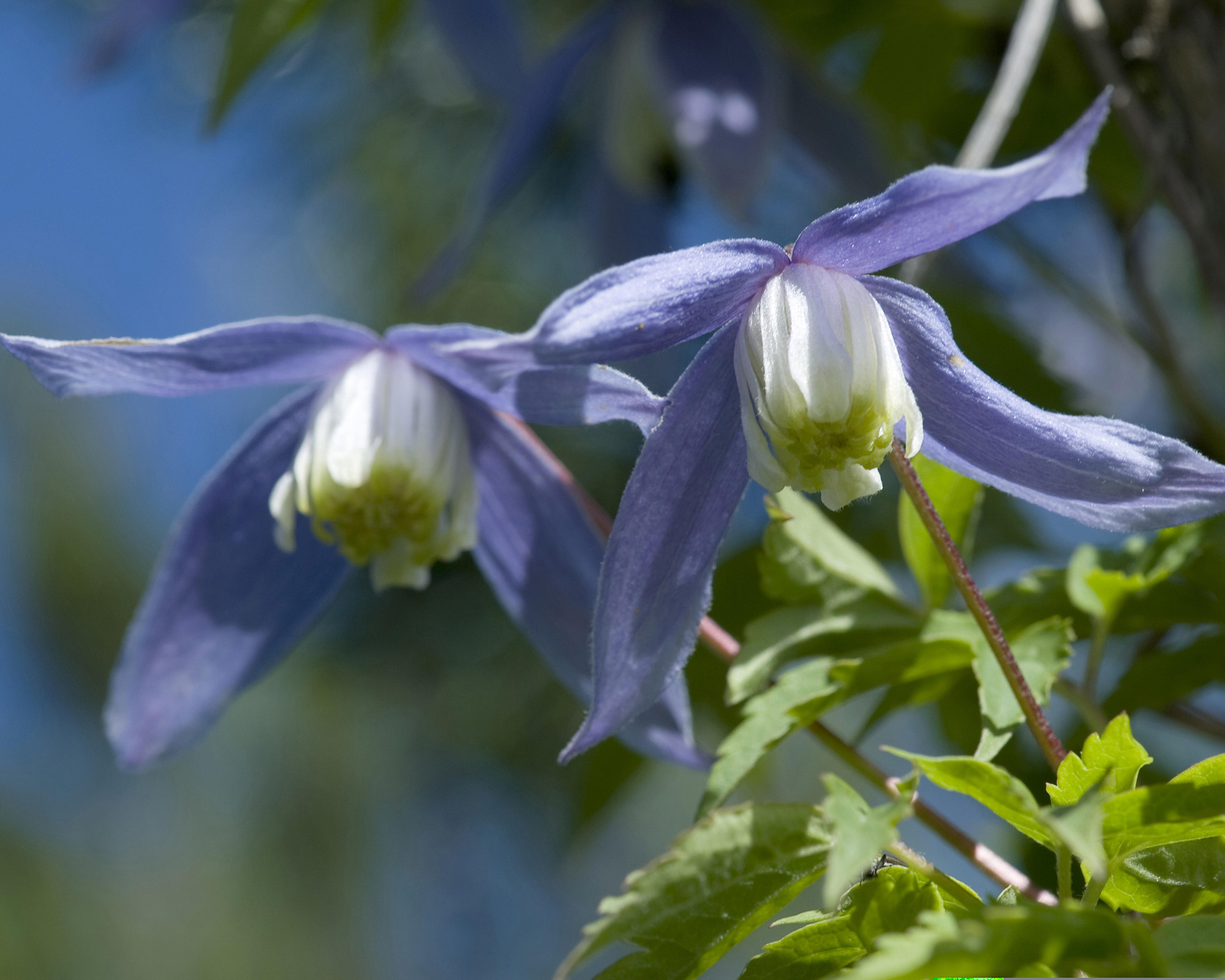
Alpine clematis (Clematis alpina) leaves are divided into three segments, each with three, toothed leaflets. The flowers are usually solitary and nodding, with four perianth segments.
Photography / Alamy
7. Sweet Briar
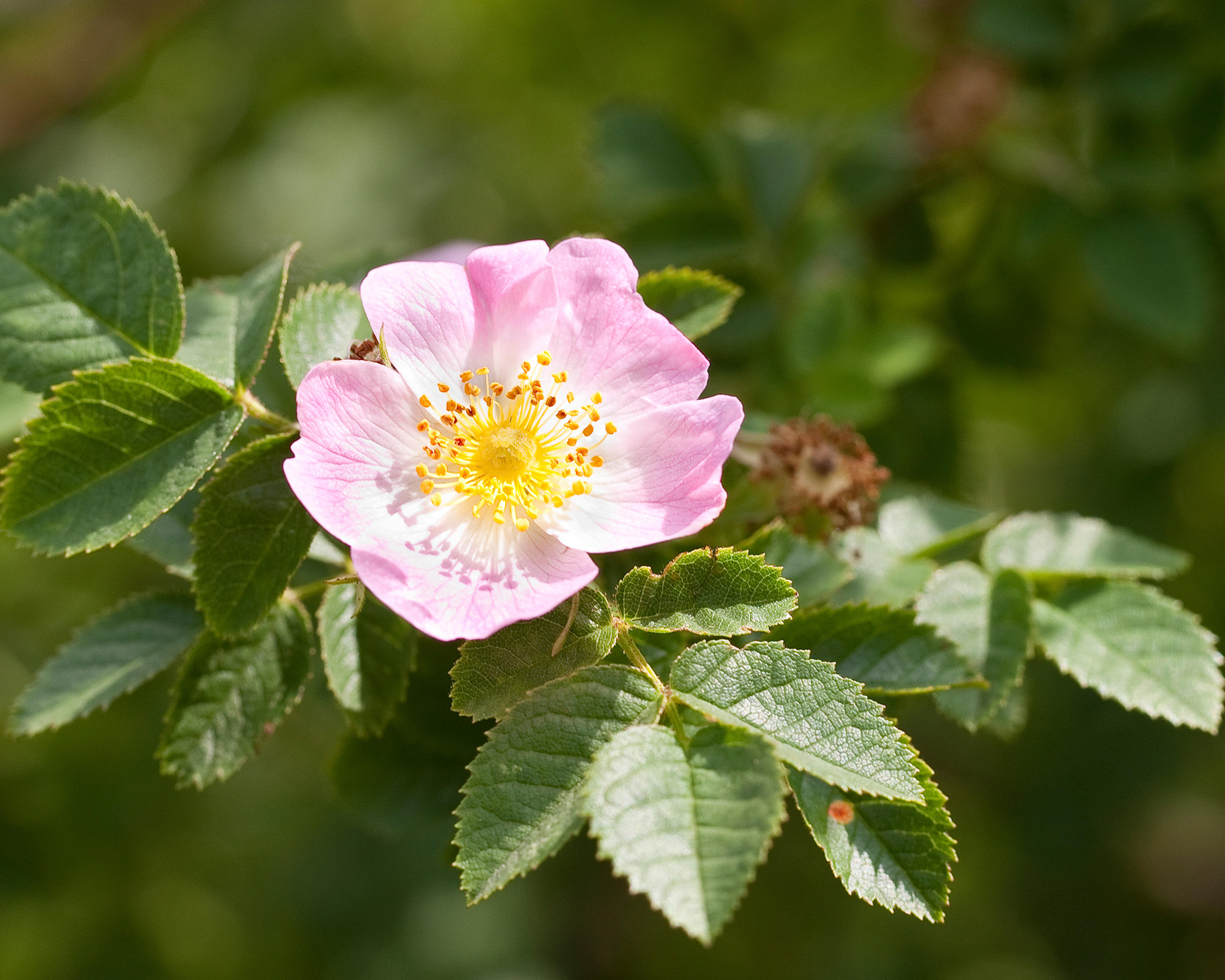
Sweet Briar Eglantine (Rosa rubiginosa) is a vigorous, arching, prickly- stemmed, deciduous shrub. The leaves are dark green, with five to nine oval leaflets 25 -40mm long, with a finely- toothed margin.
Cupped, single flowers up to 25mm across, usually bright pink, appear in early to midsummer, and are followed by oval to spherical, orange- scarlet hips in late summer.
Photography / Frank Hecker at Alamy
8. Field Poppy
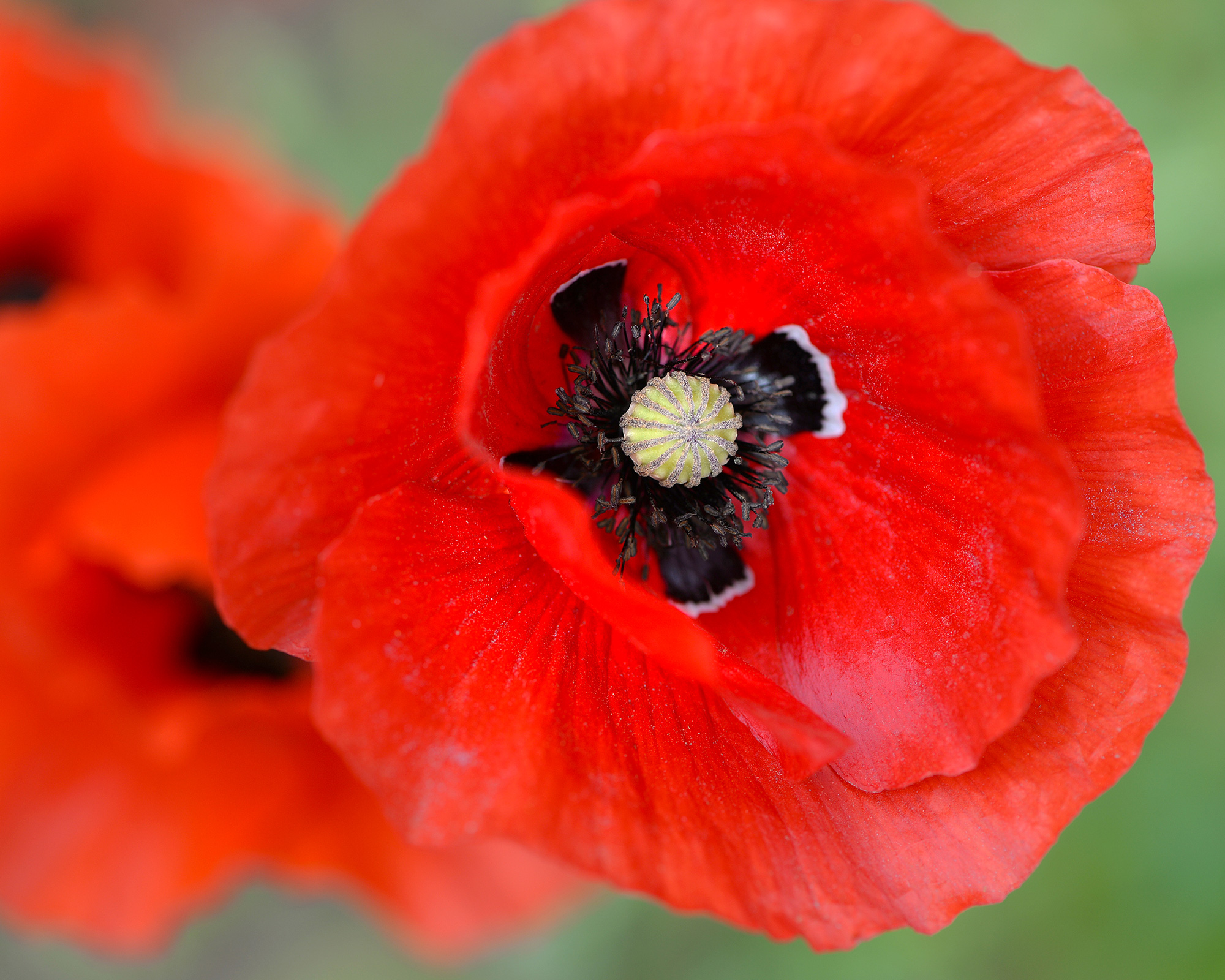
Field Poppy or Common poppy (Papaver rhoeas) has erect or semi-erect with branching stems, which are sparsely bristled and exude a white sap when cut. The oblong, light green, downy leaves, 15cm long, are deeply segmented with lance-shaped lobes.
Solitary, bowl-shaped, brilliant red flowers, sometimes marked black at the petal bases are borne on short, downy stalks from early to late summer.
The flowers are followed by hairless, spherical seed capsules, which release the seed from an upper ring of pores which ripen from late summer to early autumn.
Photography / Future PLC
9. Maiden Pink
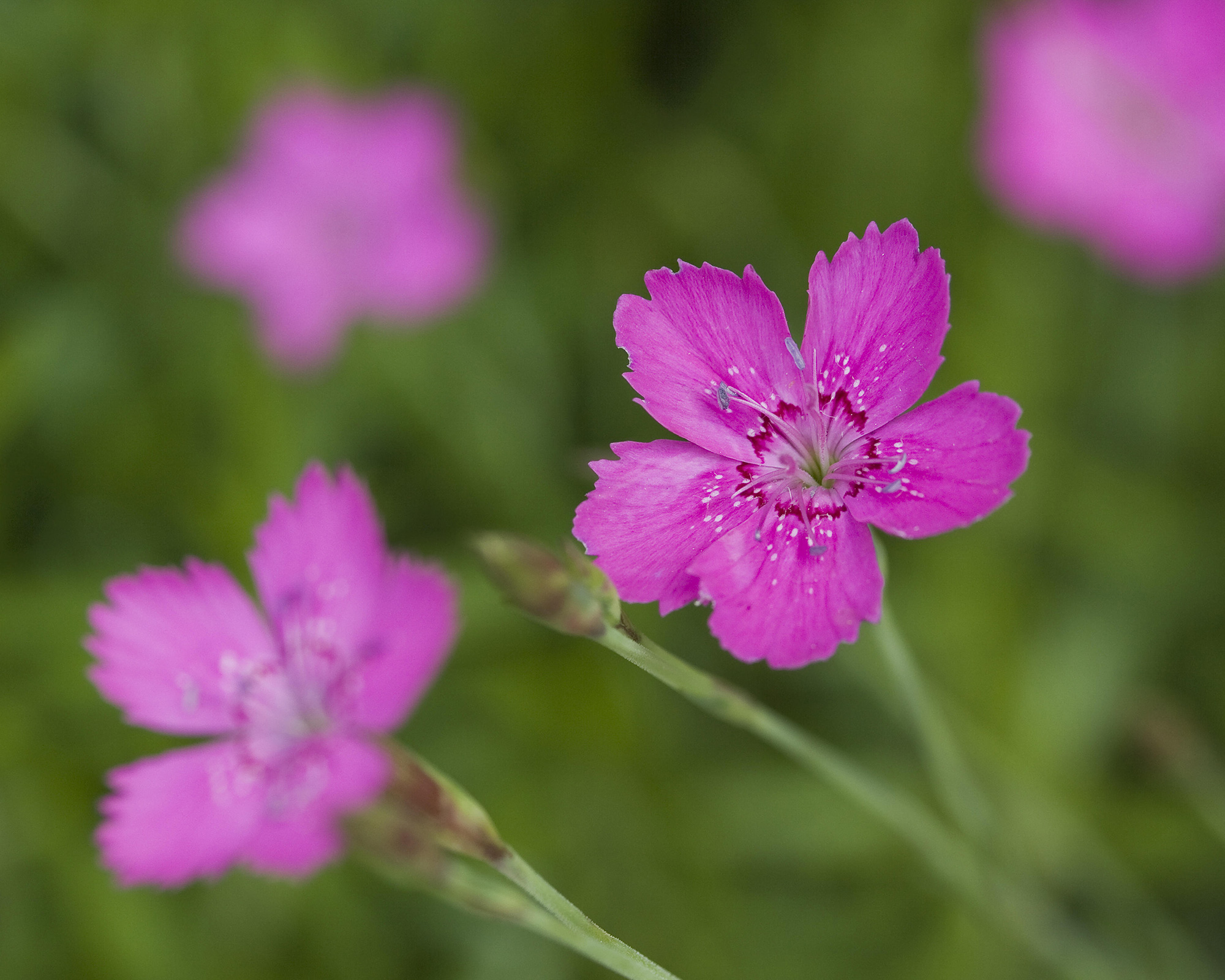
Maiden pink Dianthus deltoides is a shortly-hairy plant with prostrate shoots bearing short leaves and usually single flowers on erect, rough, tufted, green or grey-green stems.
The flowers are 12– 20mm across with usually pink petals that are toothed with whitish spots. The leaves are linear-lanceolate, blunt on non- flowering shoots, pointed and narrower on flowering shoots.
Photography / Alamy
10. Primrose
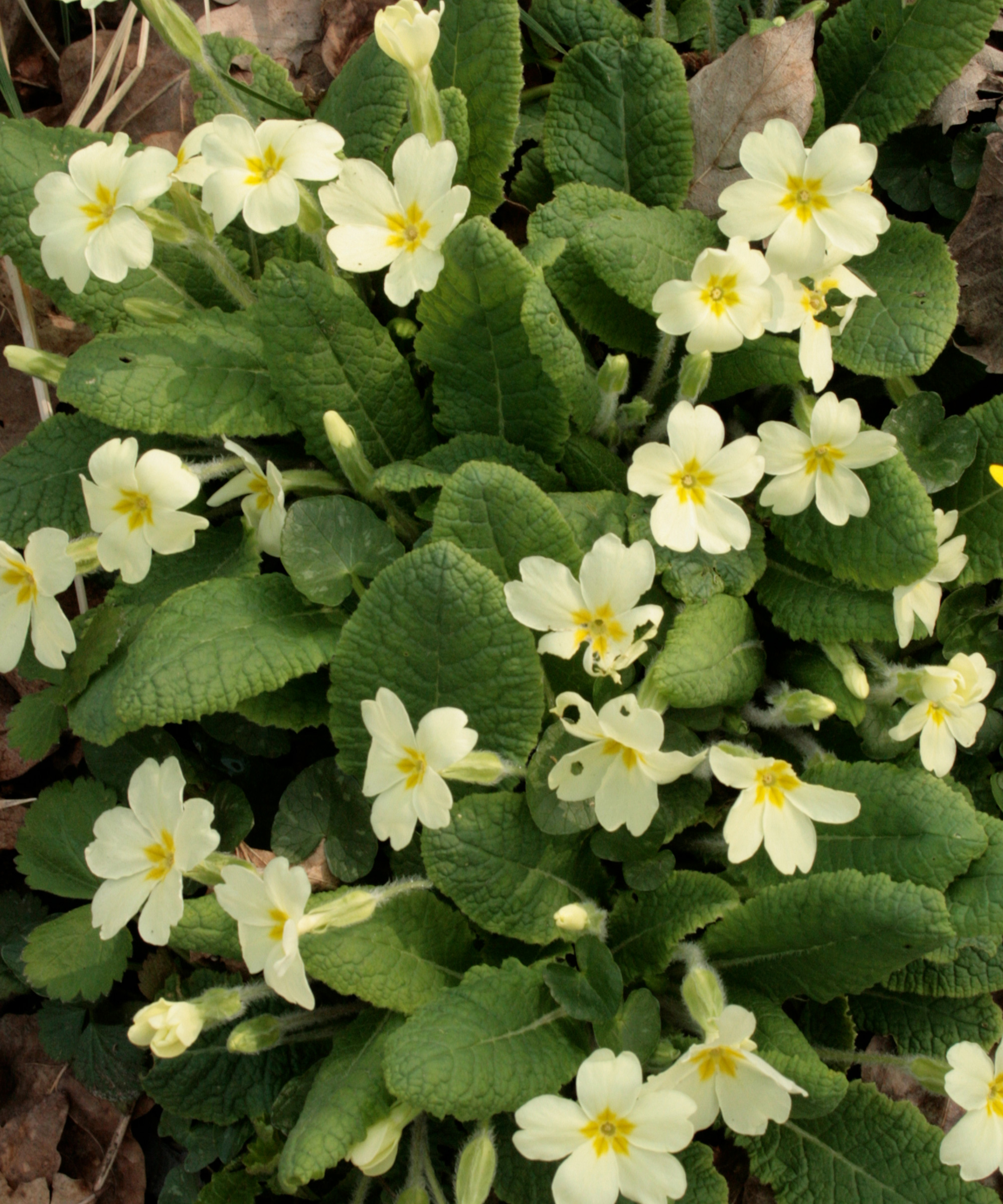
Primrose Primula vulgaris has leaves which are egg-shaped to oblong, about 12.5cm long and 40mm across in the middle, smooth above with prominent, hairy veins and veinlets beneath, the margins are irregularly toothed, tapering into a winged stalk.
The fragrant flowers are pale yellow with a darker centre and sepals forming a bell-shaped, pleated tube. They appear from late winter to late spring, each borne on a separate stalk.
Photography / Paul Quagliana for Future PLC
11. Heartsease or Wild pansy
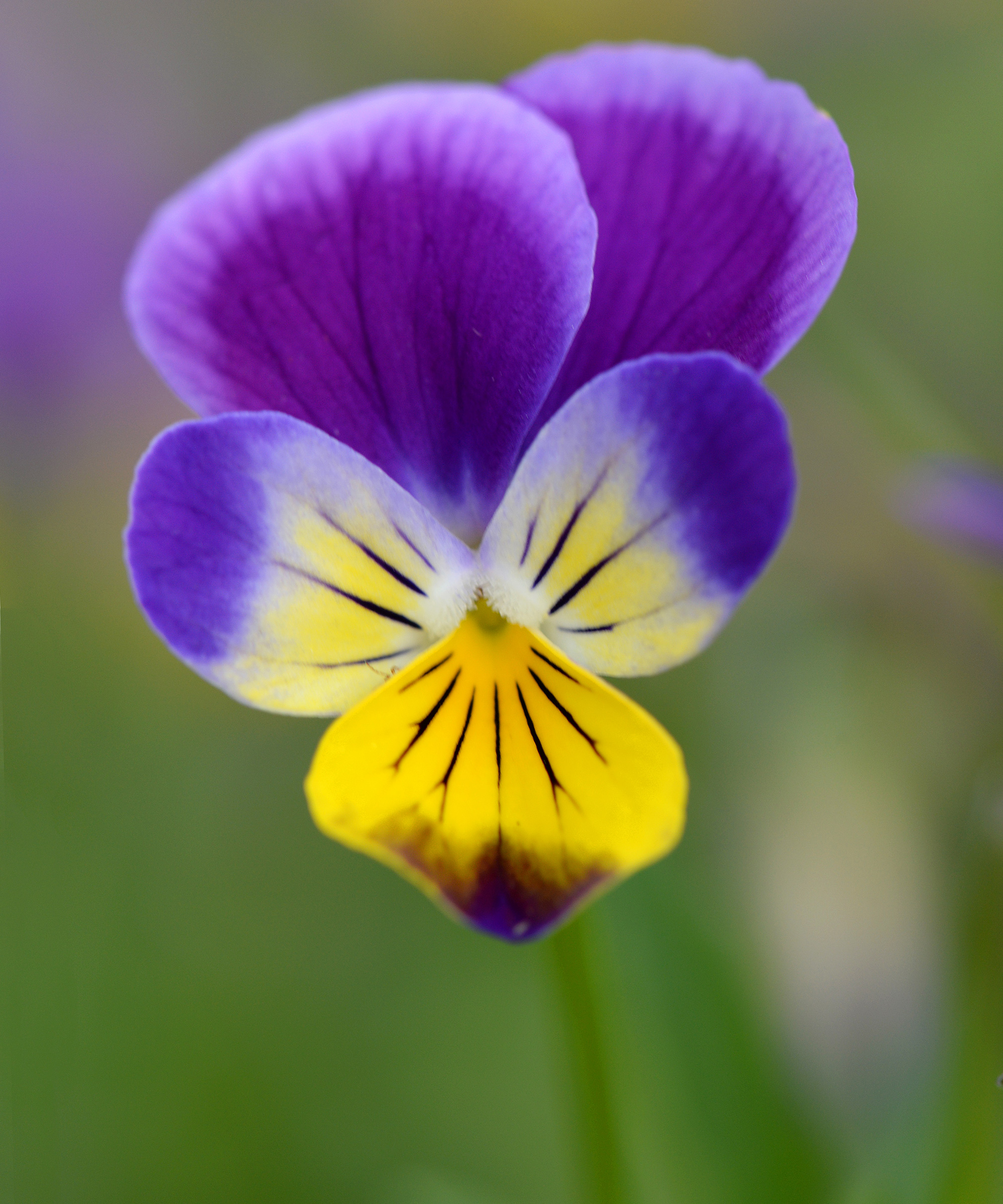
Heartsease or Wild pansy (Viola tricolor) stems are generally very angular, erect to ascending and free branching. The leaves are deeply cut into rounded lobes, the terminal one being largest, with blunt tips and round-toothed margins; the upper leaves are lance-shaped to oval.
The flat-faced flowers, 6–30mm across, vary a great deal in size and colour: they are purple, yellow or white, and most commonly a combination of all three.
The upper petals are generally the most showy and purple, with the lowest and broadest petal usually yellow. The base of the lowest petal is elongated into a spur, as in the violet.
Photography / Future PLC
12. Sweet Violet
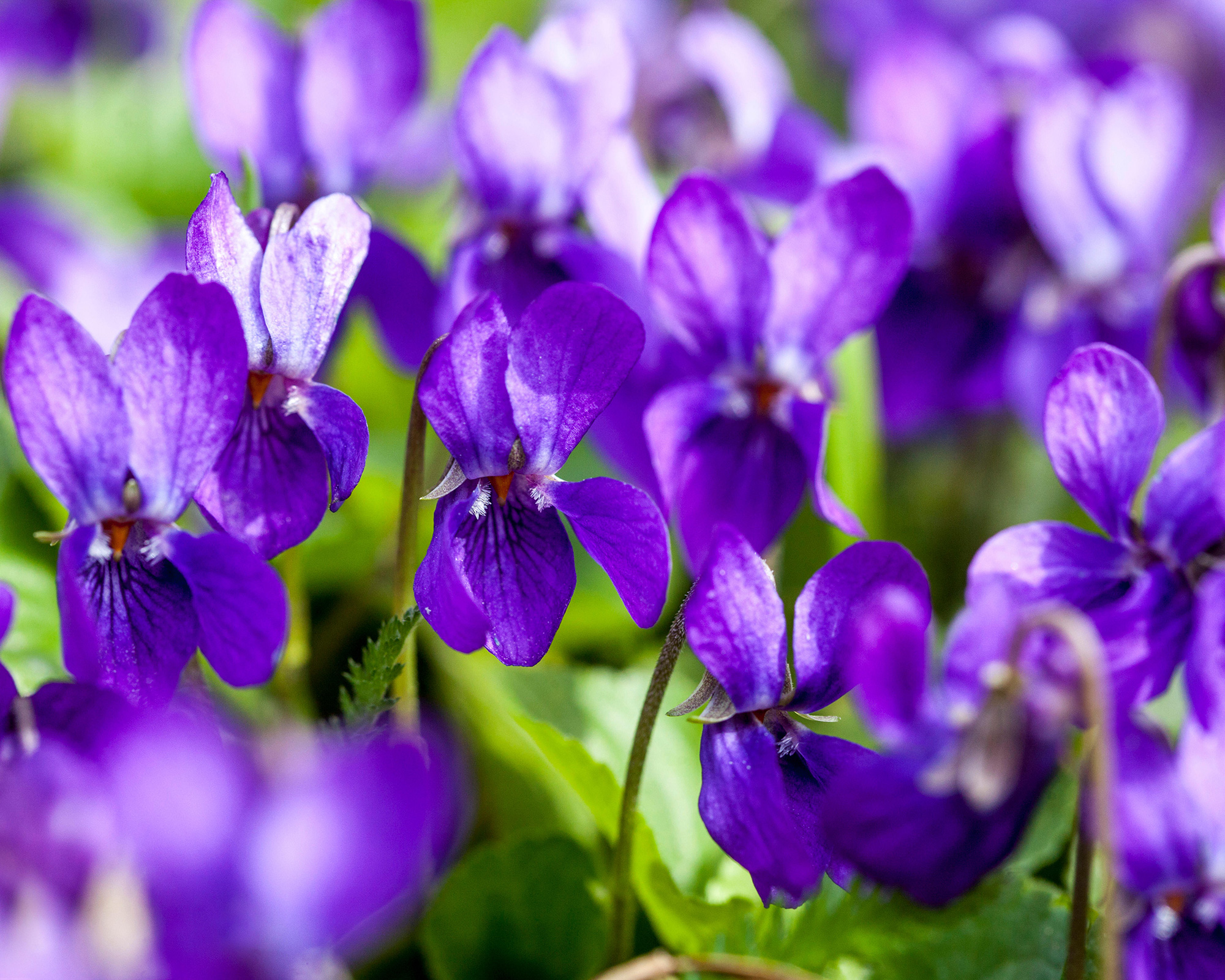
Sweet violet Viola odorata leaves are heart-shaped, with scalloped or slightly serrated edges, dark green, smooth and sometimes downy underneath. The flower stalks arise from the leaf axils from early spring to early summer, each bearing a single deep purple, blue to pinkish or even yellow-white bloom.
The flower is five-petalled. The lower petal lengthens into a hollow spur beneath and the lateral petals have a hairy centre line.
Photography / Alamy
13. Large-flowered Orlaya
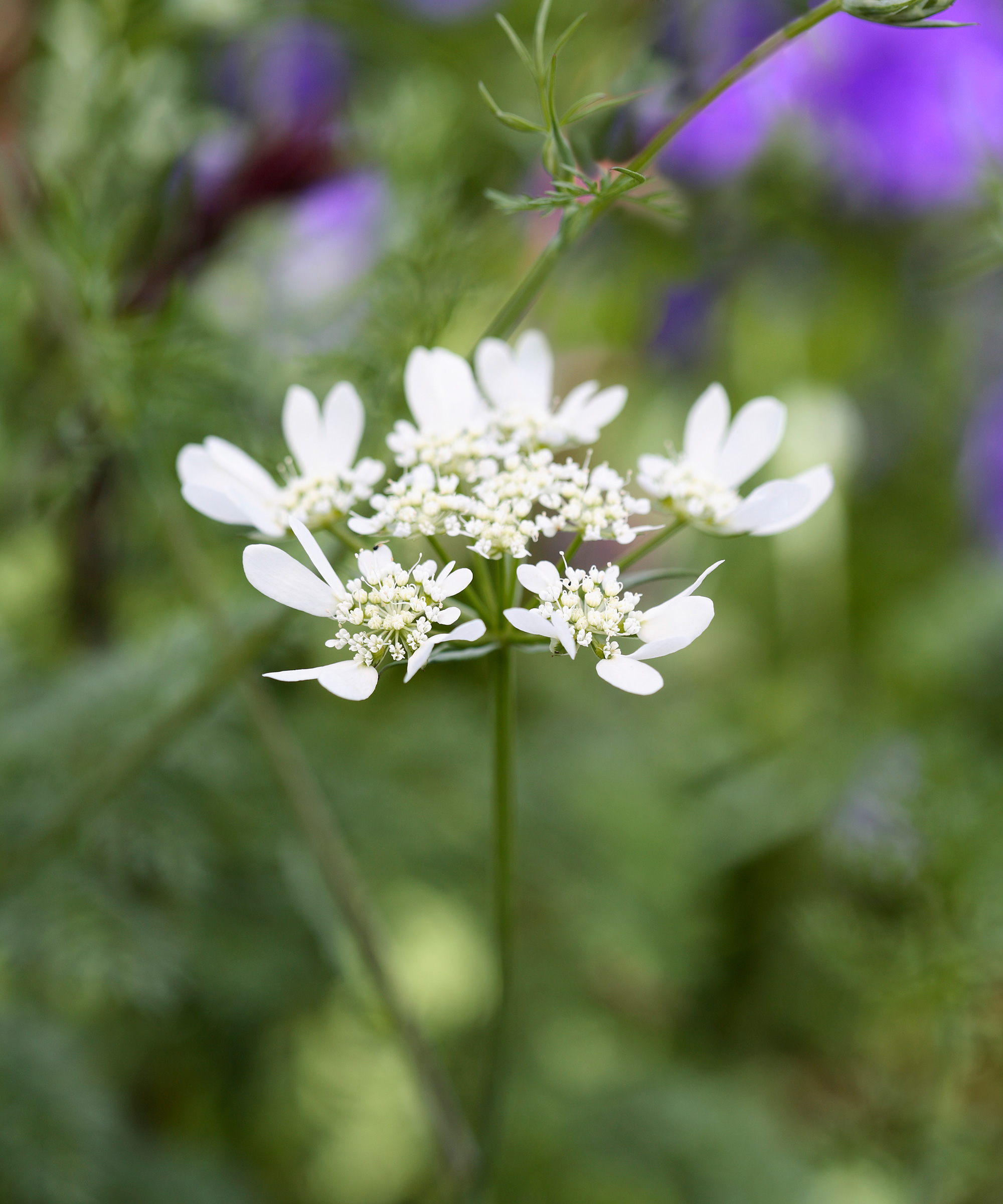
Large-flowered orlaya Orlaya grandiflora has a stem which is simple or branched and hairy at its base, but hairless elsewhere. The leaves are two to three times pinnate with oval segments; and the upper leaves are lobed. The flowers are white (or pink), the outer petals of the outer flowers are up to eight times longer than the others.
Photography / Annaick Guitteny for Future PLC
14. Wood Forget-Me-Not
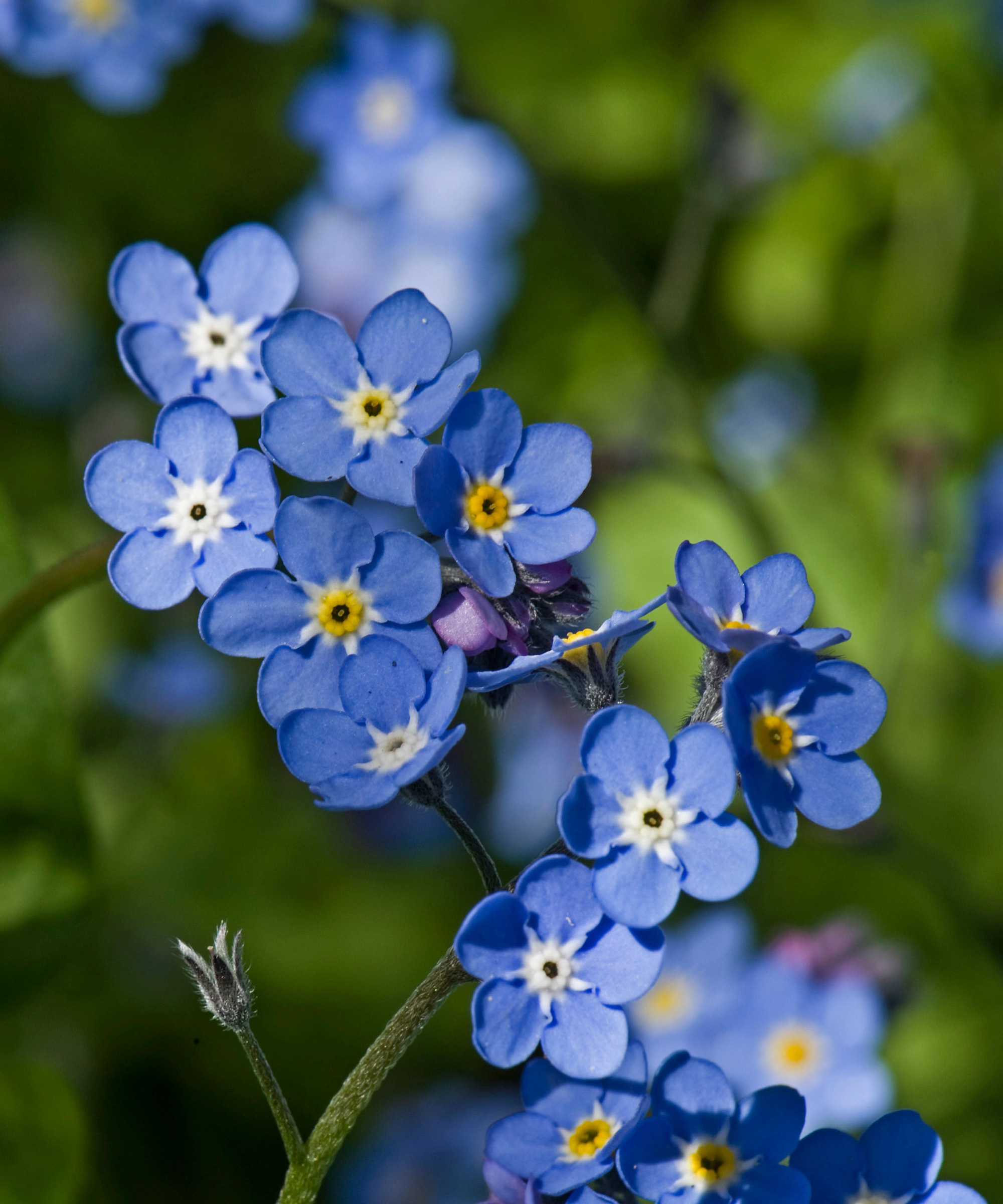
Wood Forget-Me-Not, (Myosotis sylvatica) has pale blue flowers with yellow centres which are borne on slender stalks that curl downwards towards the tips. The flat corollas are 6–10mm across.
According to plant expert Sarah Raven, 'Their botanical name, Myosotis, comes from the Greek mus (mouse) and ous (ear), due to the perception that the plant’s leaves are shaped like mouse’s ears.'
''As for the common name, forget-me-not, it is said to have come from a German legend in which a lover, while gathering the flowers fell into a river and cried ‘forget me not’ as he drowned.'
Forget-Me-Nots can also come with white, pink and striped petals, flowering from April to June.
Photography / Nigel Cattlin for Alamy
15. Foxglove
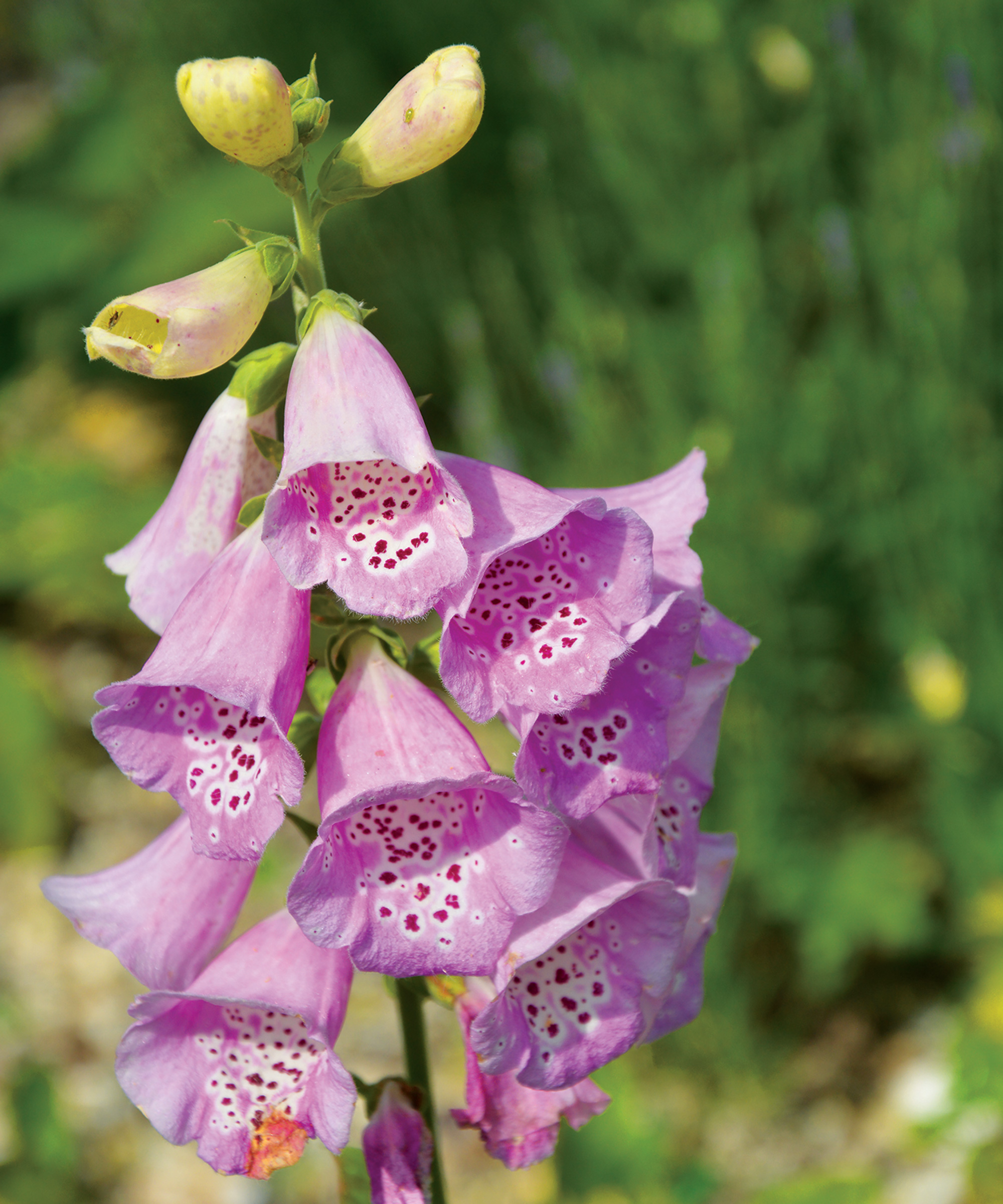
Foxglove (Digitalis purpurea) is rosette-forming and very variable, it has oval to lance-shaped, usually toothed, sometimes white, woolly, dark green leaves, 10 -25cm long.
Tall stems with alternate leaves support one-sided spikes of purple, pink or white, inflated, tubular, bell-shaped, two-lipped flowers, to 60mm long, spotted maroon to purple inside, and produced in early summer.
Photography / Future PLC
16. Daffodil
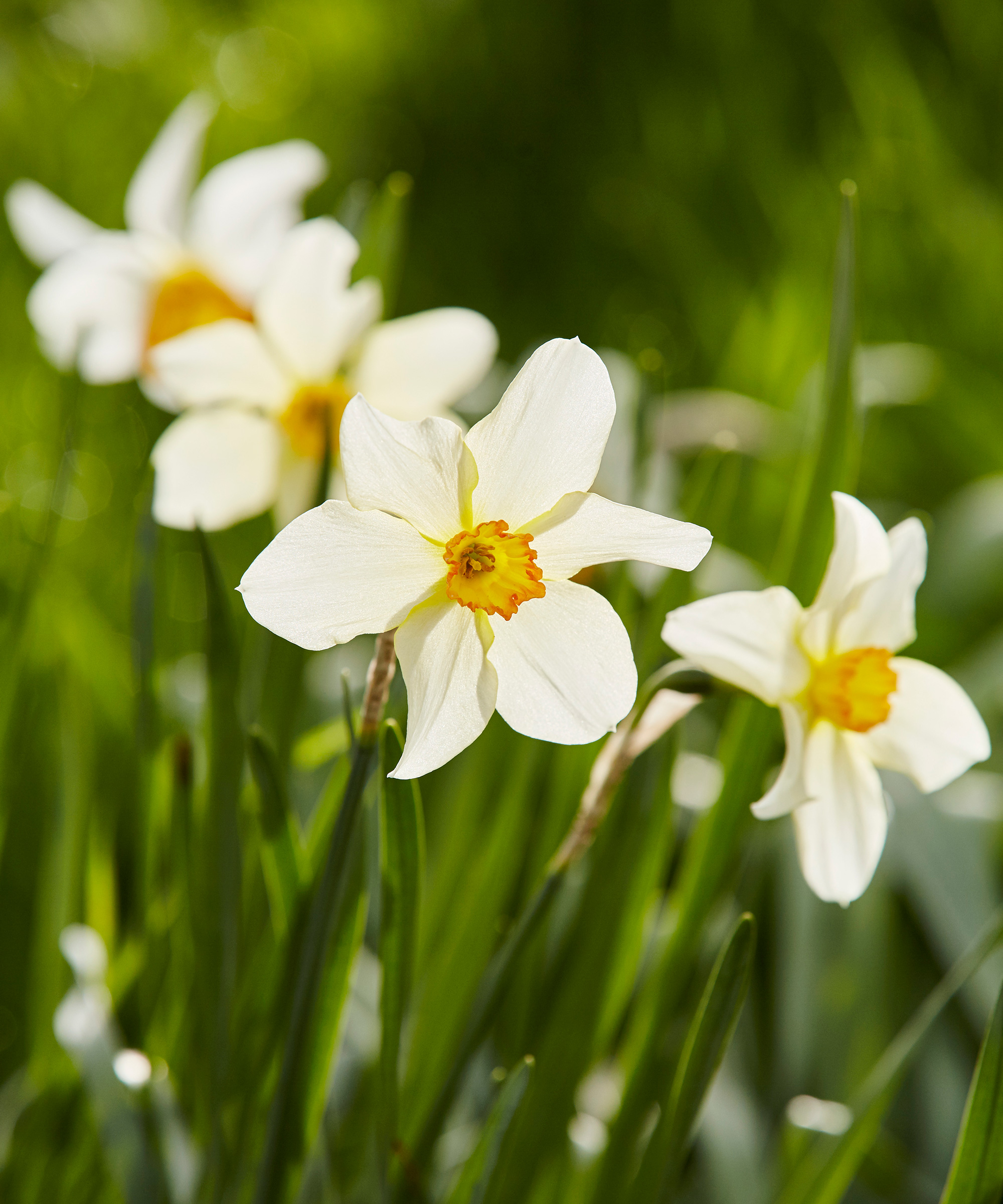
Daffodil Lenten lily (Narcissus pseudonarcissus) has thick, linear, mid-green, grass-like leaves, up to 20cm high, which appear at the same time as the flowers.
The pale yellow flowers are usually solitary, held horizontally, and consist of six similar, yellow or white spreading perianth segments and a tubular golden-yellow corolla.
Cultivated varieties of this species are widely planted and are naturalised in the wild, so distinguishing true wild populations can be difficult.
The native plants always have a darker yellow flower tube and slightly twisted tepals, and the flowers are generally smaller and more nodding than in cultivated varieties.
Photography / Alun Callender for Future PLC
17. Snowdrop

Snowdrop (Galanthus nivalis) has narrow, linear to strap-shaped, blue-green leaves appearing at the same time as the flowers. The faintly honey- scented flowers are solitary, pendulous, to 20mm long, and appear in winter to early spring depending upon their location.
The outer perianth segments are much larger than the inner ones, which do not spread on opening but form a cup containing the stamens; the inner perianth segments have a green patch towards their tip.
Photography / Marc Rosenberg for Future PLC
18. English Bluebell

English bluebell (Hyacinthoides non-scriptus) is vigorous and clump-forming, with spreading, linear to lance - shaped, glossy, dark green leaves, 20–45cm long.
In spring, one-sided racemes that bend over at the top bear 6–12 pendent, narrowly bell-shaped, scented, mid-blue, sometimes white, flowers, up to 20mm long, with cream anthers.
Blooms appear (according to local climate and conditions) from mid- to late spring.
Photography / Mark Bolton for Future PLC
19. Ramsons
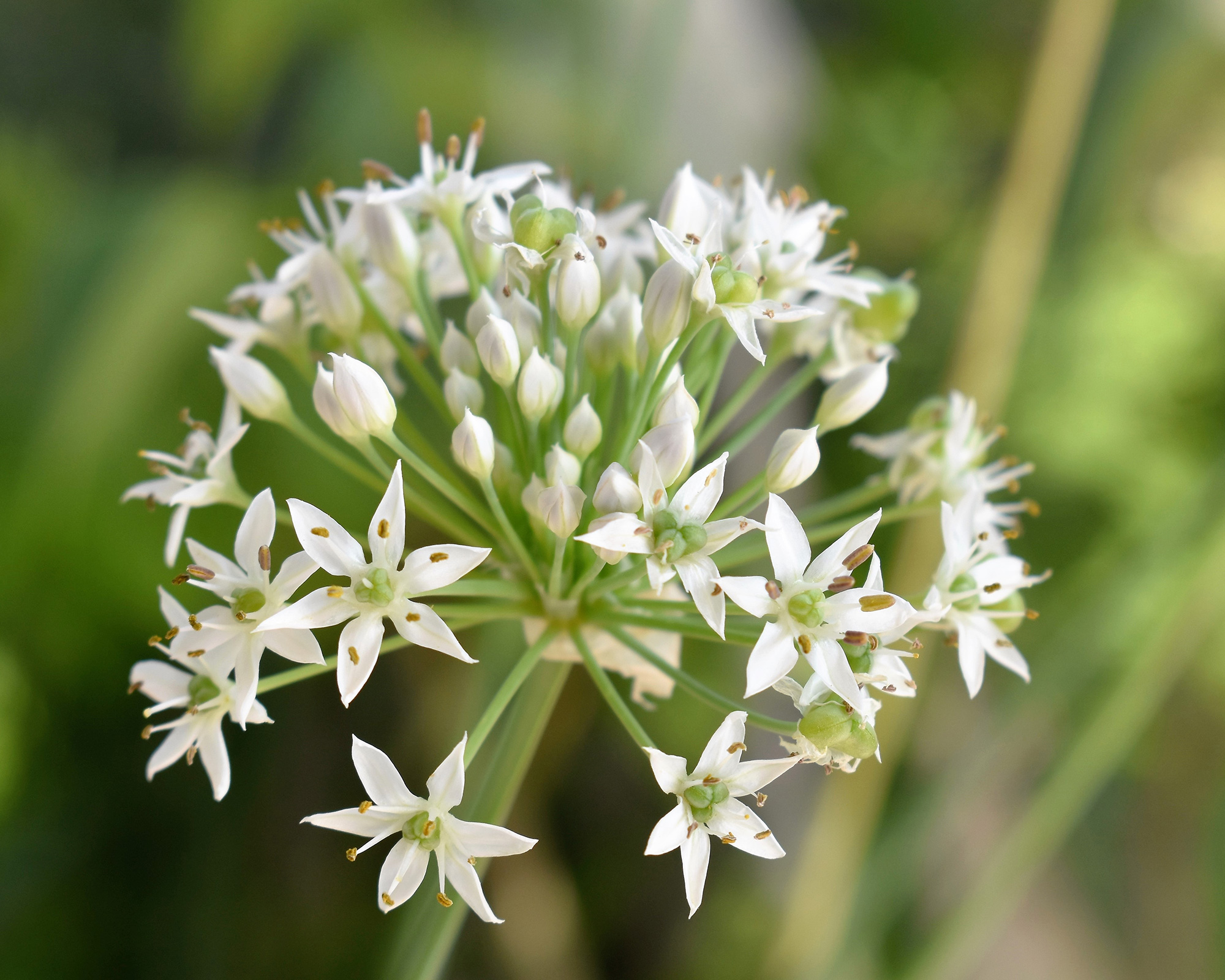
Ramsons Wild Garlic (Allium ursinum) is a common species of wild onion, found in damp, fertile woodlands across much of Europe, where it can form spectacular displays of gleaming white flowers in spring.
Each bulb produces two or three elliptic-oval, up to 20cm long, leaves, and a single inflorescence with a terminal, more or less flat-topped head of starry white flowers. Individual flowers have six perianth segments.
Each flower is up to 25mm across. The whole plant smells strongly of garlic.
Photography / Crocus
20. Meadow Vetchling
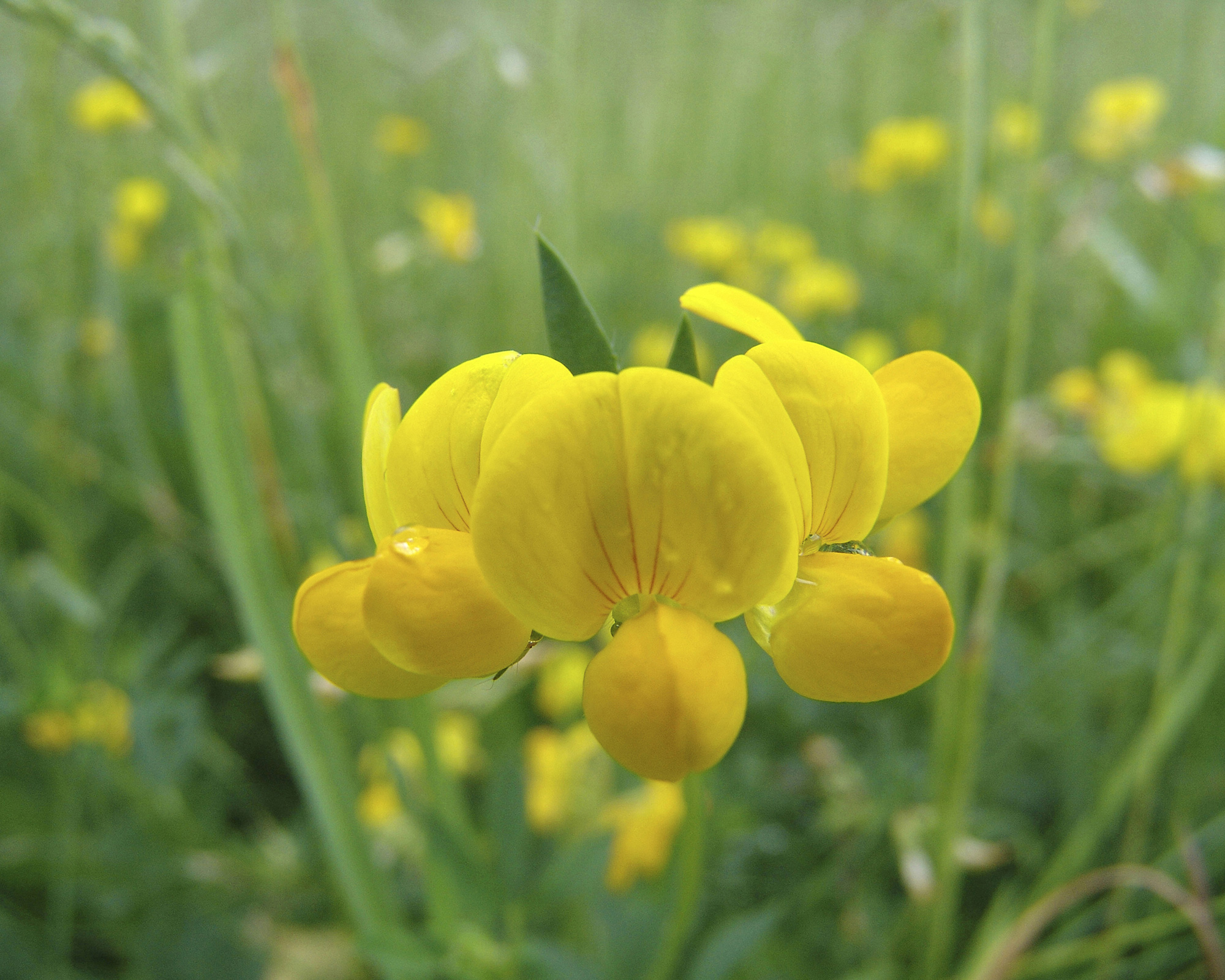
Meadow Vetchling Lady’s Slipper (Lathyrus pratensis) is favored by farmers who encourage this slender, scrambling plant to grow in their meadows as the nodules on its roots fix nitrogen from the air into the soil and so increase the richness of the earth.
With its typical bright yellow flowers, it also contributes to the food value of hay and it is rich in protein, particularly the seeds. The leaves are divided into a pair of leaflets measuring 10–30mm long and tipped with a tendril.
Photography / Alamy
For further reading we recommend:
The World Encyclopedia Of Wild Flowers & Flora by Michael Lavelle & Martin Walters
Published by Lorenz Books

Jennifer is the Digital Editor at Homes & Gardens, bringing years of interiors experience across the US and UK. She has worked with leading publications, blending expertise in PR, marketing, social media, commercial strategy, and e-commerce. Jennifer has covered every corner of the home – curating projects from top interior designers, sourcing celebrity properties, reviewing appliances, and delivering timely news. Now, she channels her digital skills into shaping the world’s leading interiors website.